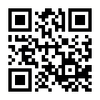文章基本信息
- 标题:Parallels of Psycho-Physiological and Musical Affect in Trance Ritual and Butoh Performance
- 本地全文:下载
- 作者:Michael Sakamoto
- 期刊名称:Pacific Review of Ethnomusicology
- 印刷版ISSN:1096-1291
- 电子版ISSN:2164-4578
- 出版年度:2009
- 卷号:14
- 出版社:University of California (UCLA)
- 摘要:
From ancient times to the present, religious and cultural rituals involving trance, ecstatic states, spirit possession, shamanic journeying, and myriad forms of music and sound have gripped societies large and small the world over. Millions of participants throughout history have directly experienced the affects and effects of such practices. However, due to the inherently ineffable nature of what we might refer to as the realm of spirit or universal energies, there has remained from time immemorial a tenuous relationship between these pursuits and intellectual analysis and understanding of them. In the 20th Century, however, with the advent of interdisciplinary approaches to scholarship as well as participatory ethnographic methods of research, there has developed something akin to a groundswell of deeper examination and comprehension in the academic, scientific, and aesthetic arenas. No longer generally considered the purview of religion and religious studies, the study of trance and ecstatic rituals relates directly and indirectly to traditional and contemporary mythologies and social narratives in a way that can both enlighten minds and elicit controversy.

